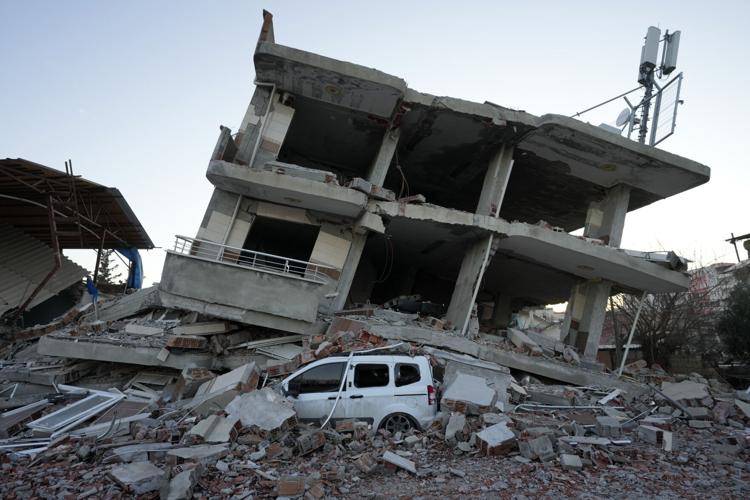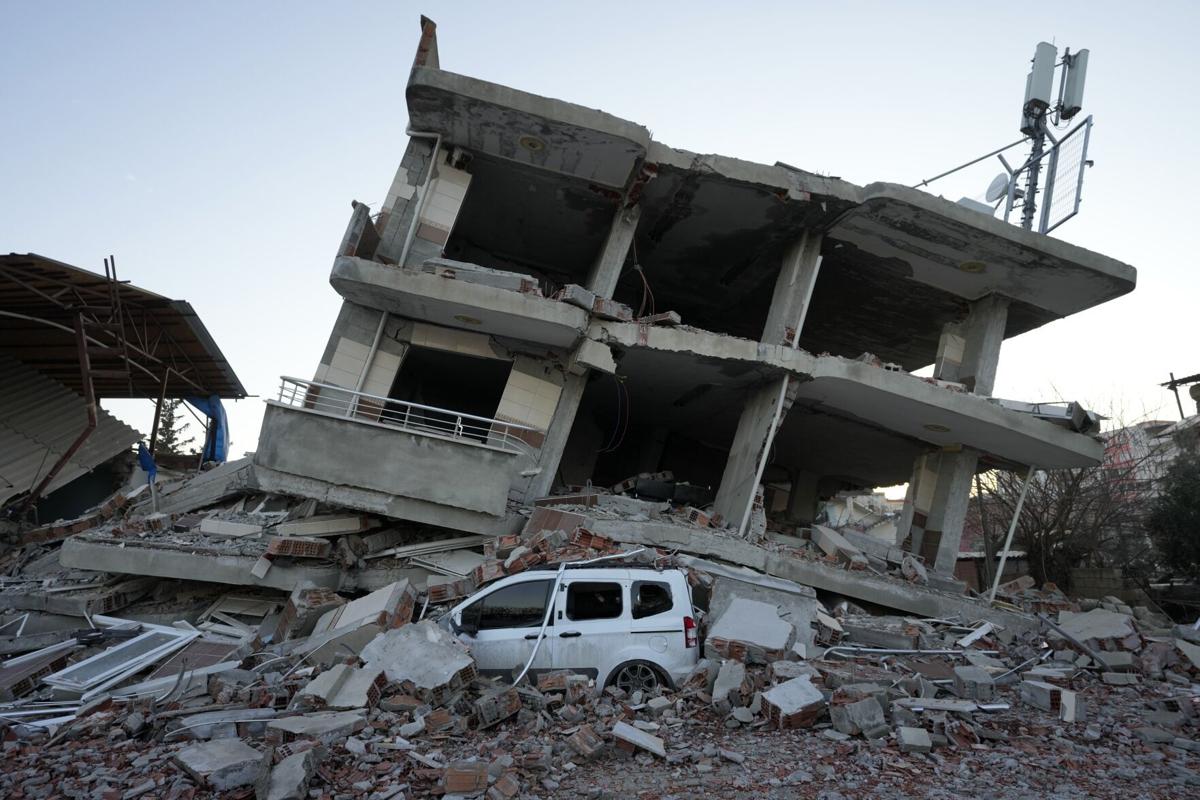Vibrations from Monday’s deadly earthquake in Turkey traveled almost 7,200 miles to Tucson in just 14 minutes and 10 seconds.
The unmistakable signal from the magnitude-7.8 quake was recorded by the U.S. Geological Survey’s seismic station at the base of Catalina Mountains near Sabino Canyon.
“We have a nice record of that in Tucson,” said seismologist Susan Beck, a professor and director of the graduate program at the University of Arizona’s Department of Geosciences.
But there’s nothing nice about the death and destruction caused by the quake and its aftershocks, Beck said.
The “terrible, terrible devastation” in Turkey and Syria is especially hard to watch because she has spent time in the region and gotten to know some of the people living there, she said. “I’ve been in many of the towns that they’re talking about on the news right now.”

A figure from the TUC seismic station at the base of the Catalina Mountains shows the ground motion from Monday’s magnitude-7.8 earthquake in Turkey. It took the vibrations just 14 minutes and 10 seconds to arrive here from almost 7,200 miles away.
From 2011-18, Beck was part of a team studying the tectonic forces at work in south central Turkey. They deployed about 65 seismic stations on and around the same East Anatolian Fault that ruptured on Monday, killing thousands of people and displacing tens of thousands more, including many already left homeless by the Syrian civil war.
All of Turkey sits in a seismically active region where the Eurasian, African and Arabian tectonic plates collide.
The documented history of deadly earthquakes there stretches back to the year 17 A.D. and includes a 1939 quake that killed nearly 33,000 people and a 1999 quake that killed more than 17,000.
That’s what makes it such an important place for scientists to study and try to understand, Beck said. “My colleagues and I are still working with the seismic data we collected.”
In the town of Saqlin, Syria, there were cries of euphoria as a little girl was pulled out of the rubble of a collapsed house, more than 40 hours after being trapped during Monday’s earthquakes. It is just one of several miracle rescues that have provided moments of joy amid the destruction and despair.
Popular videos from the past week you may have missed
Watch as a dog is rescued from earthquake rubble in Turkey, rare red sprites were captured over Hawaii after a storm, and more popular videos from the past week you may have missed.
Rescuers in Turkey saved the life of a dog that was trapped underneath rubbles after the deadly quakes that struck Turkey and Syria. Veuer’s M…
Get an astronaut’s view of auroras, stars, and the Milky Way surrounding our beautiful planet. 12,500 images taken by European Space Agency as…
Rescuers ask cars on the road to turn off their engines and for people to stay quiet while they listen for signs of life under the rubble of a…
The explosive popularity of The Last of Us, the video game-turned-HBO series where a fungal pathogen turns people into terrifying zombies, has…
Would you wear this bulky, bean-filled bodysuit? Buzz60’s Tony Spitz has the details.
The earthquake flattened thousands of buildings and has displaced millions of people. Most of the survivors are now without shelter, and tryin…
Scientists have discovered the fossilized brain of a fish in a 319-million-year-old fossil.
It’s a car, it’s a boat or is it something else altogether? Buzz60’s Tony Spitz has the details.
Engineers at the University of Colorado at Boulder have developed a helpful new stick for people who are blind or visually impaired - one that…















